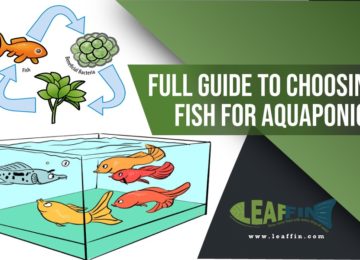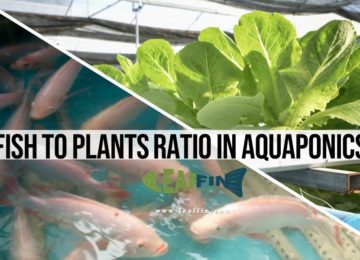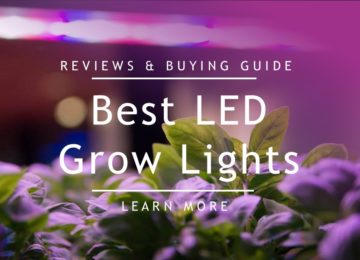Aquaponics may seem intimidating and complex when you hear about it for the first time, and it is to some extent! There’s a lot to know about aquaponics, and maybe that’s what makes it so interesting.
The system of maintaining a healthy environment for both a fish and plant takes a lot of things to take on.
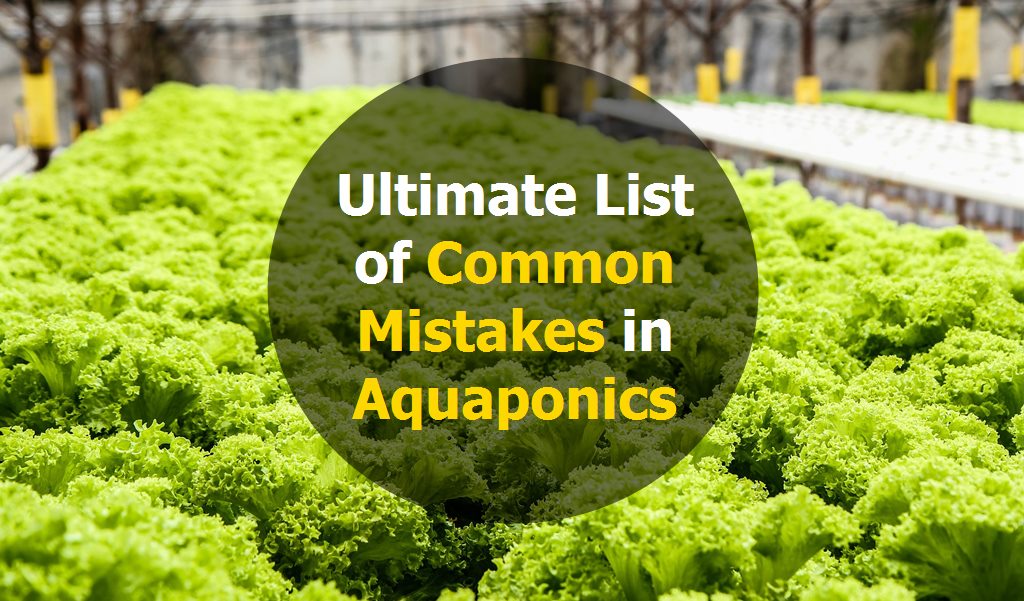
Table of Contents
Common Mistakes in Aquaponics
However, you can make Aquaponics comparatively easier to set up and maintain by avoiding these common mistakes. So, to avoid the headache others have faced when starting and operating their system, let’s dive right in!
1. Water Quality: adding poor quality or tap water into your system
Maintaining good water quality is very important. Water, being the blood of aquaponic, transport and provide all essential nutrients to the plants, and it is the medium where the fish live.
You should monitor and control the 5 key water quality parameters:
- Dissolved oxygen (5 mg/liter)
- pH (6–7)
- Temperature (18–30 °C)
- Total nitrogen (Ammonia, nitrites, nitrates)
- Water alkalinity
You have to check chlorine, pH and pathogens/parasites before you use it in your aquaponics system.
As chlorine and fluoride is mixed into water supplies in different part of world. It is recommended to test for chlorine with test kit because chlorine can be deadly to fish.
The common test kits make complex water chemistry and management simpler and easier. If you are setting up a brand new system or have a running system and need to add water to it, you can defuse the water by letting it sit for 48-72 hours with the aeration unit going.
Check our post about water parameters that effect aquaponics
2. Not Considering Fish to Water Ratio: Adding more fish than a system can handle
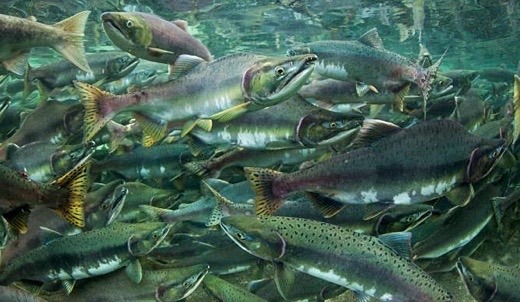
Another common problem among those starting out is that they want to grow as many fish as possible as quickly as possible. So they end up overcrowding their fish tanks.
That doesn’t only result in high nitrate levels and stunted growth for the fish, but can also lead to the fish loss.
It is advisable to keep stocking densities low when starting out with the system.
Never overcrowd your fish tanks. With lower stocking density, you will be able to easily manage your aquaponic system and can avoid any shocks and collapse. The recommended stocking density is 20 kg/1000 liters that also allow for substantial plant growth.
There is very less possibility to make a profit out of the fish portion of your system unless you have a large growing setup is of a commercial scale. As a hobby or small scale grower, you should minimize the fish portion of your aquaponics setup to maximize the margins. Since you can always add fish later, it’s a waste to overstock and lose fish to death or have to take them out.
Check our guide about fish to water ratio in aquaponics
3. Not choosing the right Growing Media
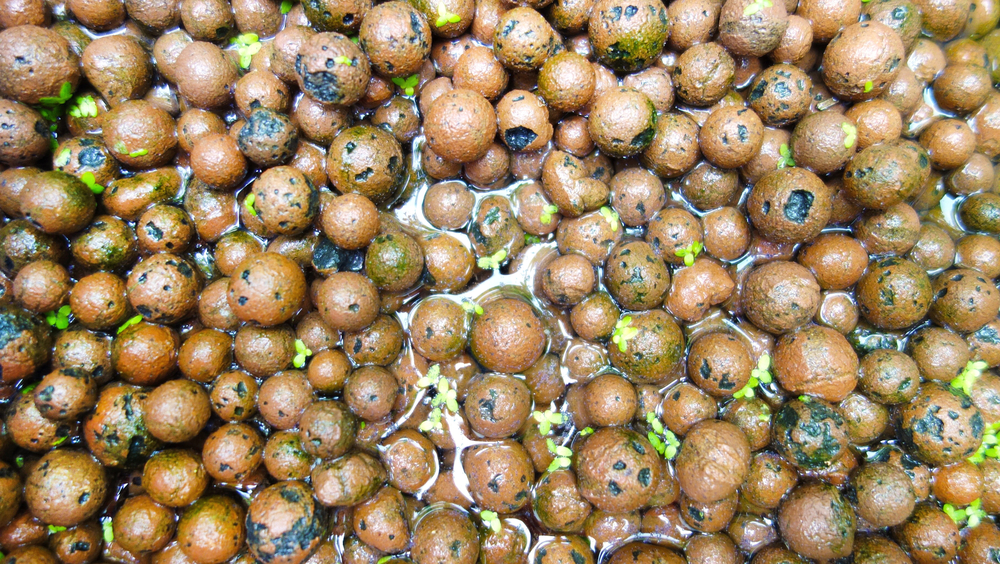
Common mistake.!
Many people start with wrong media like expanded shale or limestone, ignoring some basic factors. There are several things you have to consider before choosing growing media, check in detail here.
People prefer to use media that they can get locally and is readily available. but they don’t know what media they should use!
Check the list of all growing media here
The best Grow media is nutrient-free, neutral pH, able to retain air, able to retain water and drain quickly so that roots don’t get waterlogged. Growing media also allow the colonization for microbial populations.
Hydroton is most commonly used growing media because of its good water retention, neutral pH and easy to maintain. Check more about Hydroton clay pebbles here
4. Using harmful additives to lower the pH
Keeping pH in a specific range in aquaponics is very important. Aquaponics is a system of relationship and balance.
Some impatient people try to lower their pH using a chemical such as muriatic acid. Although chemicals will adjust your pH, many of them can potentially harm the health of your plants and fish.
So don’t consider using random chemicals for the system.
Also be careful about any quick changes in temperature or pH. Fish are it will strain the fish.
The nitrification will decrease the pH of your system over time, and that gradual drop is safe for your fish too.
Vinegar is also a slow fix, keep the dosages small and be patient.
5. Growing WRONG plants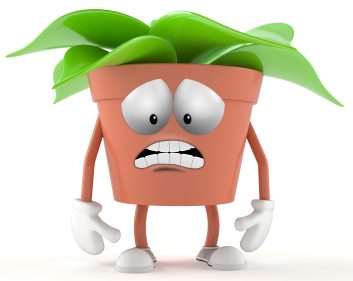
Non-native or Non-Seasonal: If you’re going to grow non-native plants, make sure that they do well. Grow seasonal plants in their season.
Choose right fish and plants: Keep in consideration season and fish. Like, Tropical fish do well in warm water., so grow the plants that grow in summer. You’ll not bother about keeping the temperature in range for fish and plants separately.
Check this post about role of temperature in aquaponics (plants, fish, bacteria)
You should grow faster-growing vegetables, like salad greens, between plants with longer-term crops (eggplant).
On a commercial level, if you’re growing plants that are low-priced in the market. You’re making a huge mistake that may cost you a lot in profitability. You can get profit from the yellow peppers, tomatoes, basil and other herbs that support greenhouse. You can not grow any grain crops including corn and wheat that are only suitable for outdoor fields.
6. Not having a pest control strategy
If you’re keeping the system clean and in check of the different parameters, you’ll rarely experience any pest problems.
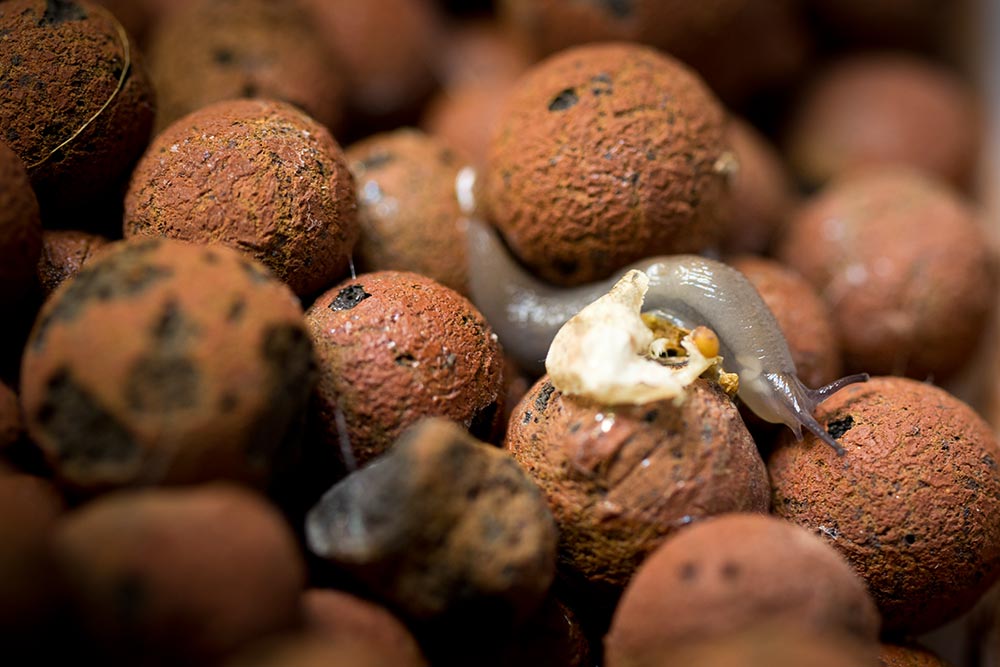
Since you can’t use pesticides in aquaponics, you need to be vigilant in your pest scouting efforts and quick to react if you see any pest problems.
These critters spread and grow in numbers, so better take care of them when you spot them.
There are many ways to get rid of them:
- Feed Them To The Fish – They may be a problem but they are protein-rich! You can set up bug traps to catch and feed caterpillars, slugs, and other insects to fish and turn a problem into a benefit. Fish will enjoy the proteinous meal and you will save some bucks on fish food!
- Knock Off With organic Water Spray – You can spray organic solution to control or repel a large infestation of insects.
- Using Predators – You can use beetles, flies, spiders, and wasps are natural predators to harmful bugs and are used as pest control. The ladybird is a common predator that feeds on aphids.
You can use cultural, biological, physical and chemical methods to eradicate pests. Check more here
7. Are your plants getting enough light?
I hear people saying that their plants are not doing well in aquaponics. And most of them are trying to grow their plants indoors or in shade.
Plants grow by photosynthesis, which requires light of at least 30,000 Lux.
If you have no access to sunlight, Use LED grow lights. If you have a small setup, these cheap and small LED grow lights will work fine.
You can also try these indoor hydroponics gardening kits that come with grow light or these small betta aquaponics tanks.
On a commercial level, use light meters to monitor if your plants are getting enough light.
8. Using transparent Fish tanks
Algae will love water and light, and they will grow everywhere they can get nutrients, in other words, everywhere the water goes by. They will grow so well that they will clog the smaller conduits, such as the tubes.
Using opaque material, such as PVC, prevents any algae issue in aquaponics as it insulates the light that promotes the algae growth.
If your system is exposed to sunlight, cover the fish tank and put the floats into the grow bed. Blocking out the sun kills off the algae that is removed by the filter, in turn.
9. Are your fish feeding regularly?
Most people are reckless in feeding the fish. Fish need an adequate amount of feed on the interval of time. Fish were being underfed can lead to low fertilizer nitrate levels. Use fish automatic feeder to automate this job.
10. Not checking the ammonia/nitrite/nitrate levels: High ammonia and low nitrate level?
Are your fish dying? It is possible that the levels of unionized ammonia or nitrite are too high in the system, and you need to increase the biofiltration.
The fish produce ammonia and discharge through their gills. Ammonia is very toxic and will eventually kill the fish.
Hence, there is a need to dilute, remove or convert the ammonia present in the water of the fish tank. You should test water at least once a week using test kits to determine the ammonia concentrations within the fish tank.
We want our system to be
- High in Nitrates
- Low in Ammonia and nitrites
High levels of ammonia are mainly caused due to having overfeeding the fish or low aerobic activity of nitrifying bacteria. This can be caused due to a lot of factors like unstable pH, inadequate DO and temperature.
Check more about the role of ammonia in aquaponics
There can be a lot of factors that increase the ammonia and nitrite levels. If not treated they can cause nitrite poisoning.
Check here how to avoid and treat nitrite poisoning
When these are low (<15 mg/L) nitrates, there is probably some denitrification occurring; when this occurs, we use the DO meter to find low DO spots, which must be corrected.
11. Are you using a trickle gravel system?
Research shows that these are more efficient systems and are easier to maintain.
12. Ignoring organic certification?
On the commercial level, having an organic certification matters a lot. Organically certified vegetables sell for more money. The price is the largest determinant of profitability.
13. Adding fish before the system has cycled
One of the most common mistakes I see in aquaponics with beginners is rushing to introduce fish into their systems.
Ammonia and nitrites produced from fish waste are toxic to fish. This can lead to pH and ammonia spikes and possibly death of fish. You need to cycle the fish to setup the system.
There are two ways of cycling your aquaponics system!
You can do it with fish or without fish.
Check out here how to cycle aquaponics system with fish
Check out this post to know how to cycle aquaponics system without fish
14. Poor circulation = poor oxygen content
You should ensure proper aeration and water circulation by using water and air pumps to maintain a healthy environment for fish, bacteria, and plants.
Check this post to know more about the role of dissolved oxygen in Aquaponics
15. Choosing the wrong fish!
You not only have to consider your space, seasonal conditions, budget but also the temperament, size, growth rate and diet of fish before thinking of keeping them.
You can’t think of using tropical fish in snowy areas! It is always recommended to choose a native fish which goes well with climatic conditions of your area. Even then you may need to keep the temperature in range. You’ll need aquarium heaters to maintain the temperature range of some fish in winter.
Read in detail about factors to consider while choosing your fish to choose the best fish for your aquaponics system.
16. Not maintaining the balance between plants and fish (fish to plant ratio)
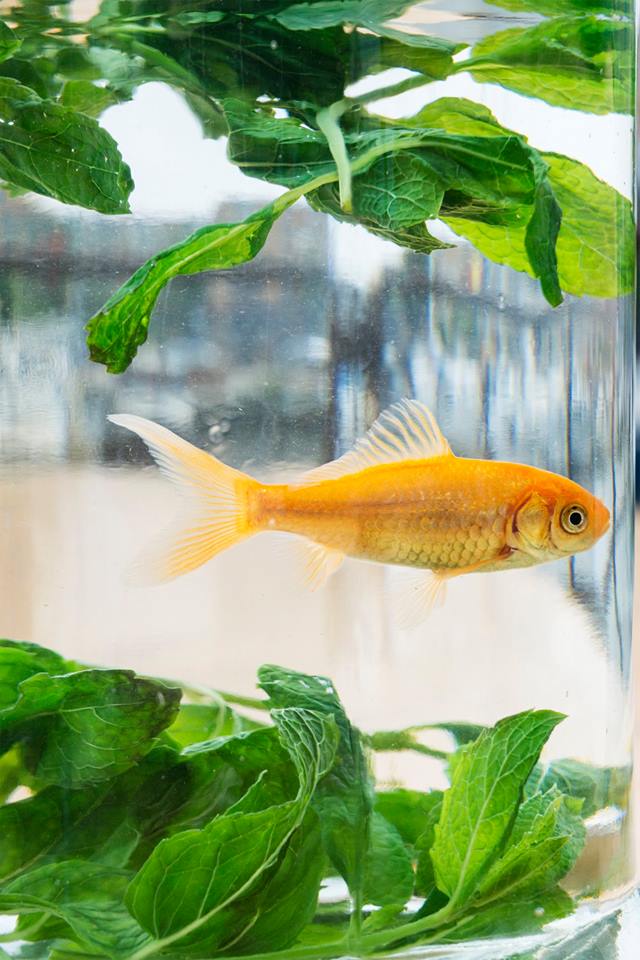
Having a lot of fish in your system will not only kill them but also may over-fertilize the plants killing them.
As different types of fish have different tolerances, it is difficult to strike a good balance between a diverse fish tank, number of plants and the system’s total volume of water.
Maintaining a balance between plants and fish is important to make the system work rightly.
Using can help
You can establish a consistent harvest of both fish and vegetables by maintaining a continuous production level and balance between fish and plants through a batch cropping system.
17. Not using Timer or right-sized Water pump
Most beginners don’t choose a right-sized water pump. The results can be devastating to fish and plants’ health. You need to consider the water volume and height between the plants & fish container. Also, using timer along with pump will help you to set an automatic on/off cycle.
Check a detailed post about water pump setup here
18. Not choosing the right fish tank
The fish tank is a vital component of any aquaponic setup. It is recommended to use round tanks with conical or flat bottoms because they are easier to clean.
19. Overfeeding the fish and not cleaning uneaten food
Not only you should avoid overfeeding, but also clean any uneaten food. The waste and uneaten food can start to decompose inside the tank that can be very harmful to fish. The decomposing food can consume all of the dissolved oxygen and cause disease.
Remember: Feed the animals daily, but remove any uneaten food after 30 minutes and adjust the next day’s feed accordingly.
20. Using duckweed as an alternative to fish food!
Aquaponics is all natural and organic! Only input it needs is the fish food.
But some new growers/fish keeper go beyond it and may want to use duckweed as an alternative to fish food.
There are many claims of duckweed having about 40% protein and said to be perfect for those aiming to grow a high protein fish.
The fish, especially tilapia, eat duckweed with gusto. The duckweed also repopulates at a faster rate than the fish eat it. These facts make it very attractive as fish food to aquaponic growers..!
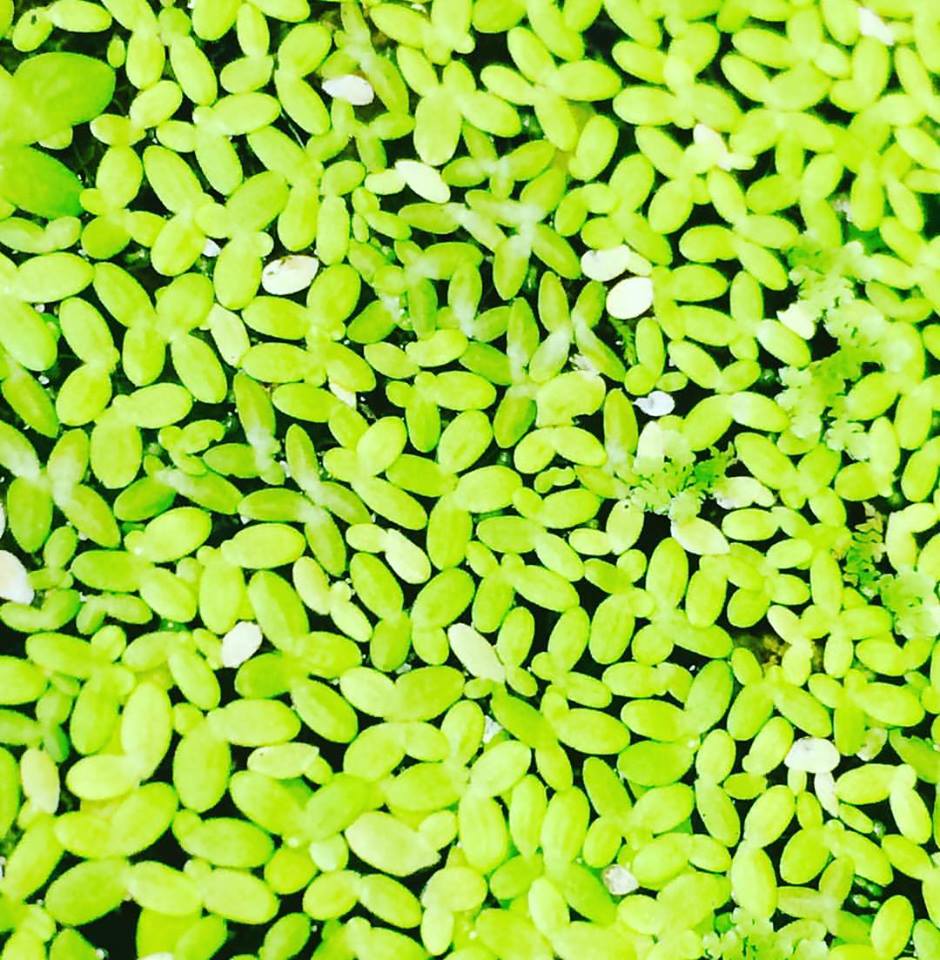
The further facts include that Duckweed is 95% water. and duckweed cannot substitute as complete fish diet!
Duckweed only contain somewhere between 35-40% protein when DRIED.
Most people who advocate for duckweed are not aware of this complete fact.
If your fish feed your fish wet duckweed which is 95% water, it means that fish is getting only 2% of the protein content from duckweed. (35-40% of the remaining non-water portion of wet duckweed)
This starves the fish making them eat it so ferociously. So never try to rely solely on duckweed and provide supplemental nutrition to your fish.
The duckweed growing faster than your starving fish can eat it can create problems.
The unstoppable and unruly growth of duckweed is a problem and can cause a major headache. It gets out of the fish tank and clog your pipes, grows beds, sump, pumps etc.
If you want to grow food for your fish, try looking into insects. They won’t clog your pipes and pumps like duckweed will and provide more protein. Check how you can make healthy food for your fish at home or include free & protein-rich insects feed in your fish diet
Aquaponics is really easy, interesting and sustainable if you have enough knowledge about it.
Mistakes can be avoided easily if know about them. We have tried to list out all the mistakes that are made in aquaponics. So no more delaying it’s time to go out and try it out yourself!
Did we miss any mistakes that people make in aquaponics? or were you making any of these? Do tell us in comments

